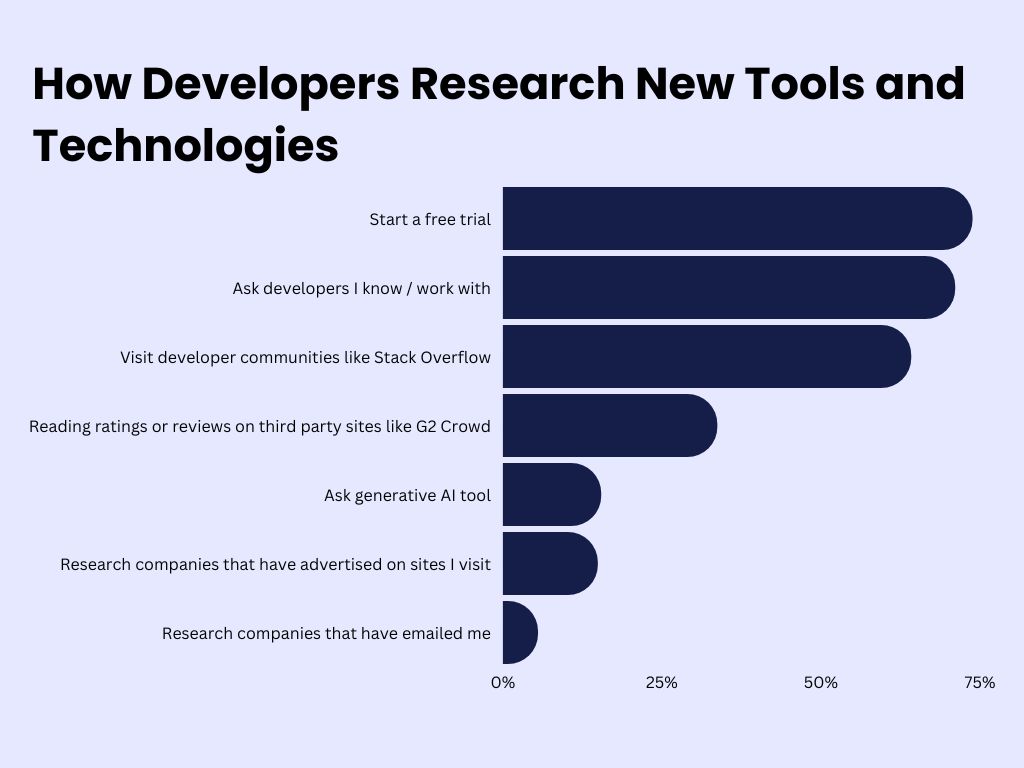In the fast-paced world of software development, the choice of developer tools and apps can significantly impact productivity, efficiency, and overall success. With an overwhelming array of options available, developers face the challenge of making informed decisions to ensure they select the right tools for their projects. In this article, we will explore some key factors that developers consider when judging which tools and apps to use, empowering them to make well-informed choices.
Identifying Project Requirements:
Before diving into the sea of available tools and apps, take a step back and evaluate your project requirements. Understand the specific challenges you need to address and the goals you aim to achieve. This clarity will help you focus on tools that align with your project’s unique demands, saving you time and effort in the long run.
Researching Online Platforms and Developer Communities:
There are numerous online tool lists such as Product Hunt, DevHunt, and developer communities such as Stack Overflow which serve as valuable resources for understanding how other developers evaluate and judge tools and apps. You can explore discussions and questions related to specific tools, frameworks, or technologies to gain insights from experienced professionals. Reading through threads, comments, and answers can provide valuable perspectives and help in the decision-making process.
Starting a Free Trial to Evaluate:
According to Stack Overflow’s latest Developer Survey which was answered by 89,184 developers worldwide, “starting a fee trial” is the most common way to evaluate a new tool.

Stack Overflow 2023 Developer Survey: How Developers Research New Tools and Technologies
This finding highlights the practical and hands-on nature of developers when it comes to assessing the suitability of tools and apps for their projects. By starting a free trial, you can directly experience the functionality, features, and user experience of a tool before making a decision. This method allows developers to explore the tool’s capabilities, assess its fit with their specific needs, and determine its potential impact on their workflow. This ensures that you choose the right tools and apps to enhance your productivity and achieve your project goals.
Evaluating User Feedback and Reviews in Developer Communities and Product Listing Sites:
In the Developer Survey, 71.02% of developers “ask developers I know/work with” when researching and evaluating new tools.
User feedback and reviews play a crucial role in assessing the suitability of tools and apps.
You can explore discussions and questions related to specific tools on the tool lists and developer forums mentioned above. Reading through threads, comments, and answers can provide valuable perspectives and help in the decision-making process.
By considering feedback from other developers who have used similar tools, one can evaluate the pros and cons of different options and gain a better understanding of potential issues and limitations.
Considering Community Support:
The strength and activity of a tool’s community support can greatly impact its long-term viability. Developers should look for tools and apps that have an active and engaged community, with a group of Developer Advocates at the helm. Active communities often indicate ongoing development, bug fixes, and enhancements. Additionally, vibrant communities offer opportunities for collaboration, knowledge sharing, and obtaining support when encountering challenges.
Reviewing Documentation and Tutorials:
Comprehensive and well-maintained documentation is crucial for developers in judging the usability and functionality of tools and apps. Developers can refer to official documentation, tutorials, and guides provided by tool vendors to understand how the tool integrates into their workflow and whether it meets their requirements. Clear documentation saves time and effort during the learning and implementation phases.
Assessing Compatibility and Integrations:
Developers need to consider the compatibility of tools and apps with their existing tech stack. Evaluating how well a tool integrates with the programming languages, frameworks, and libraries already in use is essential. Seamless integration reduces potential conflicts and ensures smooth collaboration within the development environment.
By taking these factors into account, developers can make informed decisions and select the tools and apps that best meet their specific needs, ultimately enhancing their productivity and achieving their project goals. In addition, if you’re launching a new product these factors should also be taken into consideration to understand what your customers’ decision-making process is. According to the Stack Overflow survey, launching with a free trial option looks like the way to go to boost adoption and to create a buzz in developer communities!
Whether you are a developer or a team launching a new devtool – we wish you the very best of luck and hope you found this article helpful!



